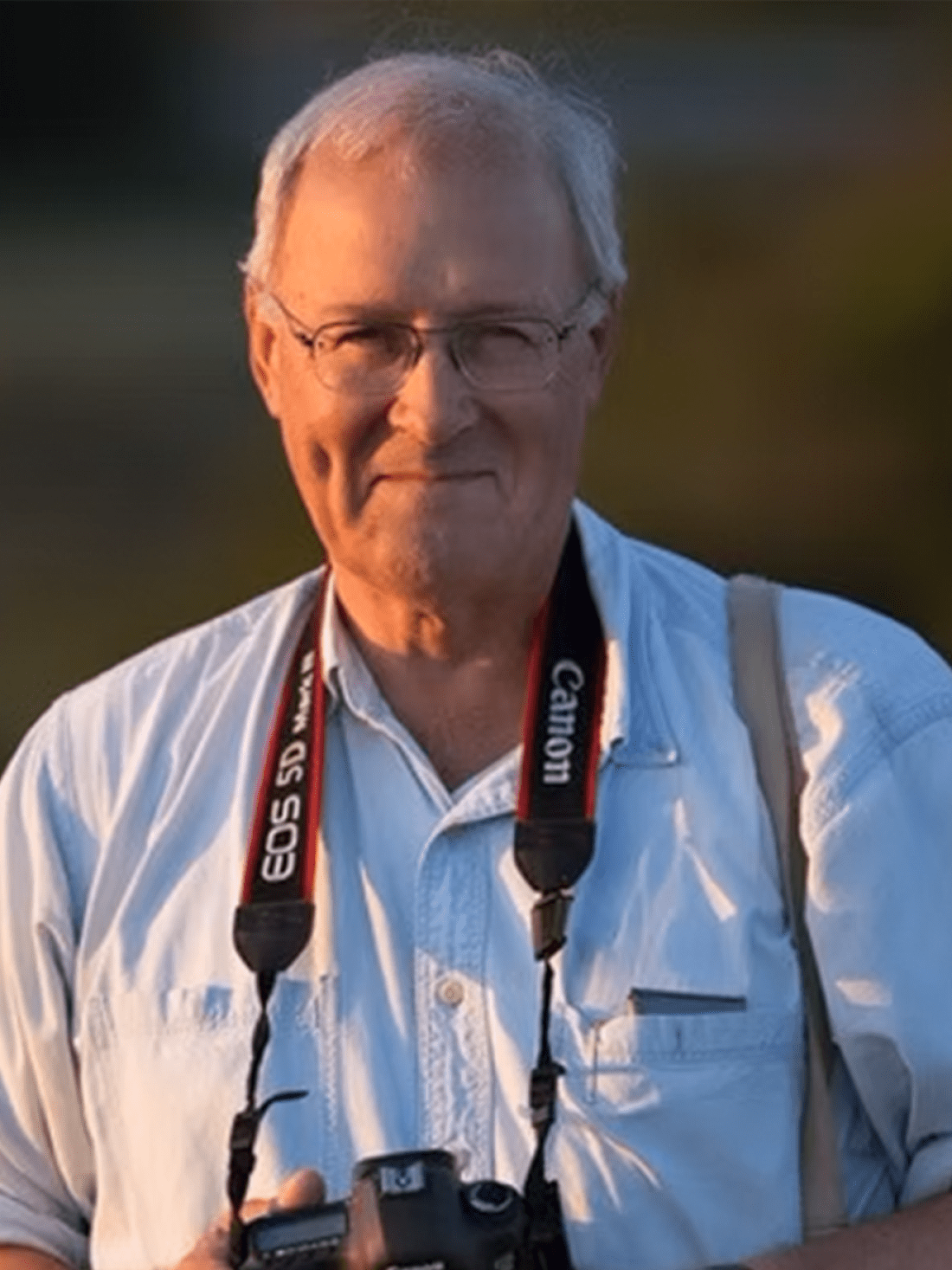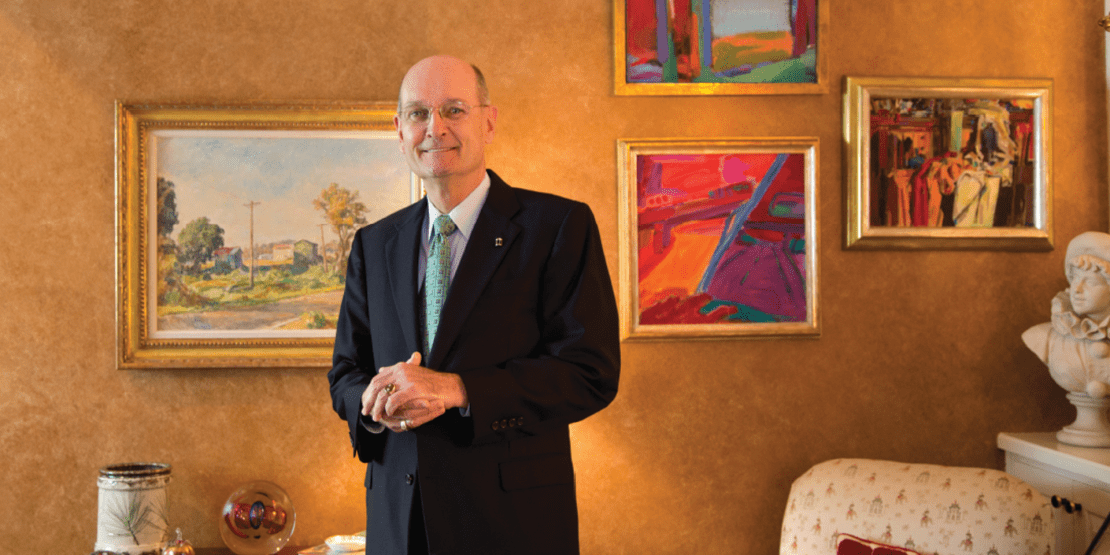Introduction by Chris Richards, Artist, Physician, Dancer, Craven CC Alumna

A gift, bestowed by Dr. Jim Congleton, has provided his much beloved New Bern community an opportunity to experience the beauty and wonder of art while learning at Craven Community College.
Although Dr. Congleton’s background is heavily science based, he was deeply moved by an undergraduate art appreciation class. This solitary class was the beginning of an understanding of both two and three-dimensional art which would transform his life.
Now, Dr. Congleton has transformed our community college by providing a way to have a more intimate experience with art instead of the traditional textbook approach to learning. I am referring to his endowment of The Congleton Sculpture Collection, which now includes 28 outdoor sculptures installed on the grounds of Craven Community College in New Bern, North Carolina.
Why would sculpture be important to learning? Most community colleges traditionally employ a classroom based, textbook education in austere buildings with little thought to how its environment could enhance learning. The Congleton Sculpture Collection provides an environment enriched with a variety of figurative and abstract artworks, thoughtfully positioned throughout the campus, providing access to all.
A sculpture creates a learning opportunity in itself. Sculpture interacts with the viewer who experiences its physicality–its dimension, size, color, contour, and complexity of form. Sculpture is tactile. It can evoke a sense of peace or exhilaration or longing. It stimulates thought and contemplation. Similar to the scientific method, art also allows us to ask questions and ponder artistic meaning and purpose. Does it represent strength, passion, diversity? How was it made, and why did the artist choose the materials used?
We can also ask not just what the artist intended, but how a sculpture affects our learning on a personal level. Does it provide a tranquil meditative space? Does art inspire? Do these sculptures evoke a sense of pride in the students and teachers as they walk through the campus, and does that sense of pride affect other areas of learning?
I believe The Congleton Sculpture Collection does all of this. It is exceedingly rare for a community college to have such a diverse collection of art, creating an elegant and evocative learning environment for students, faculty, and our community to enjoy. Thank you, Dr. Congleton – for your kindness, your generosity, and your desire to move us with these incredible works of art.
James B. Congleton, III Sculpture Collection at Craven Community College, New Bern Campus

The original gift of a 17-piece personal sculpture collection to Craven Community College was made by Dr. Jim Congleton in 2014. With this initial gift his desire was to share the beauty of art with the community he loves.
“It gives me a great feeling to know that CCC students, and the community in general, will enjoy the sculptures,” said Dr. Congleton. He feels that each time someone stops and examines a sculpture it can be a learning moment —where an individual can spend the moment interpreting and reflecting on the artist’s creation.
Dr. Congleton originally intended to donate the sculptures to a public entity upon his death, but after meeting with then Craven CC President Dr. Catherine Chew in 2013, he was eager to give the entire collection to the college. He wanted to keep his sculpture collection together so people could experience its diversity of styles and materials.
“I am glad that I donated the sculptures now rather than waiting because people can enjoy them sooner,” said Dr. Congleton.
Dr. Congleton’s love of art began when he took an art appreciation class while he was in college pursuing a chemistry degree. He began collecting paintings and then a friend suggested he start collecting sculptures for his home. As he attended sculpture and art shows, his collection spread to the outside of his home and to his yard and then to areas around his pediatric dentistry practice.
Among Dr. Congleton’s favorite sculptures is one of the first he collected, Boy on Stilts, which is the centerpiece of the renovated Congleton Courtyard, located between the Brock Administration Building and Ward Hall on the New Bern campus. This bronze sculpture was created by Virginia artist, Dr. William Turner, who is also a dentist. Another favorite sculpture of his is Eye to the Soul, which was created by artist Bruce Niemi and can be seen and enjoyed by all who enter and exit Craven CC’s New Bern campus.
Since the original gift of 17 sculptures in 2014, Dr. Congleton and gifted an additional 11 sculptures to Craven CC.
We invite you to wander the campus and learn more about each sculpture and the artists who created them by scanning the QR codes placed next to each of the 28 sculptures now in the collection.
The 28 works in the collection were all created by American sculptors and all were born in the 20th century, with one exception.
Born in 1880, Harriet Frishmuth is the earliest artist represented. A student of renowned artists Auguste Rodin and Gutzon Borglum, Frishmuth's reputation and career grew steadily throughout the first several decades of the twentieth century. The other the artists represented were all born after 1931 are were working in the second half of the 20th century. Many the artists represented have worked well into the 21st century and have active studios at this time.
The categories of the sculptures vary from classical to modern realism, from the representational to the abstract, and from serious contemplation to the humorous and play time of children.
Categories:
Children At Play
Batter Up
Boy on Stilts
Just Like Mom
She Ain't Heavy
Interception
Abstract
Eye to the Soul
Let Knowledge Soar
The Rising to Enlightenment
Cu Culhain
Implosion Marker
Seeds
Duet
Figurative - Classical References
Torso
Seated Male Nude
Wind
Crest of the Wave
Man
Figurative - Abstract References
Virgin Mary with Child
Marble and Stone
Seedman
Breaking Into Subconsciousness
Chauncey
From the Waters Come My Bounty
Bailey
Kinetic and Playful
Stabile
High Rider
Frog Fountain
Mr. Turtlelli

Dr. John McQuade was born in Towson, MD and lived there until leaving for college at Yale University. He went on to earn his medical degree from Yale University School of Medicine and moved to New Bern in 1978 where he has been practicing medicine for 40 years, specializing in both Internal Medicine and Cardiology.
John got his first camera when he was 12 and has had a love for photography ever since. His passion for fine art photography grew when he attended a large format black and white workshop with renowned photographer Fred Picker, in Putney, Vermont in 1980. He returned from the workshop with plans to build a darkroom in his home. He was hooked.
Since then, he has attended other workshops, including two with John Sexton, a widely acclaimed black and white photographer, who himself had the opportunity of learning from Ansel Adams. John’s earlier photography was shot and developed in black and white, where he learned to focus on fine details found in landscapes throughout the United States.
His appreciation for natural beauty is evident in his photography. The simple things are transformed into images that can take viewers to another place. He can bring us to a southern plantation in the mid-1800s just as easily as he can to the extraordinary plush mountain range in another country. We are there with him, enjoying the moment as if our own.
Over the years, John has photographed areas all over the United States and he has ventured into Canada, Ireland, Italy, and most recently, Iceland. His travels always bring him back home where he has great enthusiasm for photographing along our coast and in our mountains. He has also nurtured an interest in floral photography. John continues to master various techniques, moving from developing black and white photographs in the darkroom to creating digital images on the computer.
He enjoys spending time with his wife, Diane, their three daughters, and seven grandchildren.
Learn more about John's photography on the following pages:
